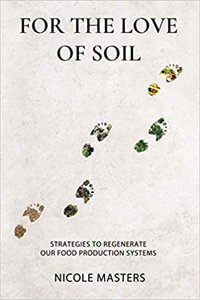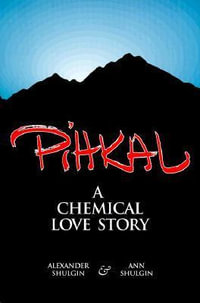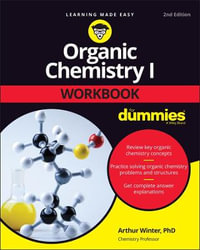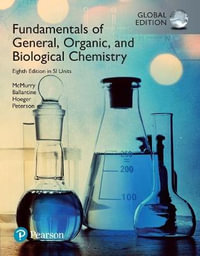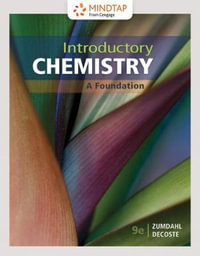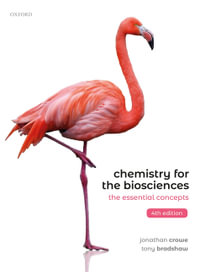
Green Adhesives
Preparation, Properties, and Applications
By: Inamuddin (Editor), Rajender Boddula (Editor), Mohd Imran Ahamed (Editor), Abdullah M. Asiri (Editor)
Hardcover | 3 June 2020 | Edition Number 1
At a Glance
304 Pages
1.0 x 1.0 x 1.0
Hardcover
$467.50
or 4 interest-free payments of $116.88 with
orAims to ship in 10 to 15 business days
Green Adhesives: Preparation, Properties and Applications deals with the fabrication methods, characterization, and applications of green adhesives. It also includes the collective properties of waterborne, bio, and wound-healing green adhesives. Exclusive attention is devoted to discussing the applications of green adhesives in biomedical coatings, food, and industrial applications.
Preface xv
1 Anti-Adhesive Coatings: A Technique for Prevention of Bacterial Surface Fouling 1
Xiaohong Sun, Songyuan Zhang, Hui Li and Nandika Bandara
1.1 Bacterial Surface Fouling (Biofouling) 2
1.2 Negative Effects of Biofouling by Bacteria on Practical Applications 2
1.3 Anti-Adhesive Coatings for Preventing Bacterial Surface Fouling 3
1.3.1 Hydrophilic Polymers 3
1.3.2 Zwitterionic Polymers 7
1.3.3 Super-Hydrophobic Polymers 9
1.3.4 Slippery Liquid Infused Porous Surfaces (SLIPS) 10
1.3.5 Protein and Glycoprotein-Based Coatings 12
1.4 Bifunctional Coatings With Anti-Adhesive and Antibacterial Properties 13
1.5 Concluding Remarks 16
Acknowledgments 16
References 17
2 Lignin-Based Adhesives 25
Xiaolin Luo and Li Shuai
2.1 Introduction 25
2.2 Native Lignin and Source of Technical Lignin 27
2.2.1 Native Lignin 27
2.2.2 Technical Lignins 28
2.3 Limitations of Technical Lignins 29
2.3.1 Heterogeneity of Technical Lignins 29
2.3.2 Reactivity of Technical Lignins 30
2.4 Lignin Pre-Treatment/Modification for Adhesive Application 32
2.4.1 Physical Pre-Treatment 32
2.4.2 Chemical Modification 35
2.5 Challenges and Prospects 45
2.6 Conclusions 47
References 47
3 Green Adhesive for Industrial Applications 57
Priyanka E. Bhaskaran, Thangavel Subramaniam, Gobinath Velu Kaliyannan, Sathish Kumar Palaniappan and Rajasekar Rathanasamy
3.1 Introduction 57
3.2 Advanced Green Adhesives Categories—Industrial Applications 59
3.2.1 Keta Spire Poly Etherether Ketone Powder Coating 59
3.2.2 Bio-Inspired Adhesive in Robotics Field Application 60
3.2.3 Bio-Inspired Synthetic Adhesive in Space Application 62
3.2.3.1 Micro Structured Dry Adhesive Fabrication for Space Application 62
3.2.4 Natural Polymer Adhesive for Wood Panel Industry 72
3.2.5 Tannin Based Bio-Adhesive for Leather Tanning Industry 74
3.2.6 Conductive Adhesives in Microelectronics Industry 76
3.2.7 Bio-Resin Adhesive in Dental Industry 78
3.2.8 Green Adhesive in Fiberboard Industry 79
3.3 Conclusions and Future Scope 81
References 81
4 Green Adhesives for Biomedical Applications 85
Julliana Ribeiro Alves dos Santos, Alessandra Teixeira de Macedo, Audirene Amorim Santana, Maria Eliziane Pires de Souza, Rodrigo Assuncao Holanda and Glauber Cruz
4.1 Introduction 86
4.2 Main Raw Materials of Green Adhesives: Structure, Composition, and Properties 87
4.2.1 Chitosan 88
4.2.2 Alginate 90
4.2.3 Lignin 93
4.2.4 Lactic Acid PLA 94
4.3 Properties Characterization of Green Adhesives for Biomedical Applications 96
4.3.1 Diffraction X-Rays (DRX) 98
4.3.2 Atomic Force Microscopy (AFM) 99
4.3.3 Scanning Electron Microscope (SEM Images) 100
4.3.4 Wettability or Contact Angle (CA) 101
4.3.5 Fourier Transform Infrared Spectroscopy (FTIR) 102
4.3.6 Inductively Coupled Plasma—Optical Emission Spectrometry (ICP-OES) 103
4.3.7 Thermal Analysis (TG/DTG/DTA and DSC Curves) 104
4.3.8 Surface Area and Porosimetry Analyzer (ASAP) 105
4.3.9 Mechanical Properties of Green Adhesives 105
4.4 Biomedical Applications of Natural Polymers 106
4.4.1 Alginate 107
4.4.1.1 Biomedical Applications of Alginate 107
4.4.2 Chitosan 108
4.4.2.1 Biomedical Applications of Chitosan 108
4.4.3 Lignin 109
4.4.3.1 Biomedical Applications of Lignin 109
4.4.4 Polylactide (PLA) 110
4.4.4.1 Biomedical Applications of PLA 110
4.5 Final Considerations 111
Acknowledgements 111
References 112
5 Waterborne Adhesives 121
Sukanya Pradhan
5.1 Introduction 121
5.1.1 Motivation for the Use of Waterborne Adhesives 122
5.1.1.1 Sustainability and Environment Regulations 122
5.1.1.2 Circular Economy 122
5.1.1.3 Avoid Harmful Emissions 122
5.1.1.4 Development of Novel and Sustainable End Products 122
5.1.2 Environmental Effects and Mankind Toxicity Analysis 123
5.2 Performance of Waterborne Adhesives: An Overview 124
5.2.1 Waterborne Polyurethane (WBPU) Adhesives 124
5.2.1.1 Chemical Structure of Waterborne PU 124
5.2.1.2 Performances of WBPU Adhesives 124
5.2.2 Waterborne Epoxy Adhesive 125
5.3 Conclusions 126
References 126
6 Using Polyfurfuryl Alcohol as Thermoset Adhesive/Sealant 129
Rakesh Kumar and Rajnish Kumar
6.1 Introduction 130
6.2 Furfuryl Alcohol as Adhesives 132
6.3 Polyfurfuryl Alcohol as Sealants 133
6.3.1 Effect of Different Parameters on the Curing of PFA-Based Sealants 134
6.4 Applications 140
6.5 Conclusions 141
Acknowledgement 142
References 142
7 Bioadhesives 145
M. Ramesh and L. Rajesh Kumar
7.1 Introduction 146
7.2 History of Bioadhesives 148
7.3 Classification of Bioadhesives 149
7.4 Mechanism of Bioadhesion 150
7.4.1 Mechanical Interlocking 151
7.4.2 Chain Entanglement 152
7.4.3 Intermolecular Bonding 152
7.4.4 Electrostatic Bonding 153
7.5 Testing of Bioadhesives 153
7.5.1 In Vitro Methods 153
7.5.1.1 Shear Stress Measurements 153
7.5.1.2 Peel Strength Evaluation 154
7.5.1.3 Flow Through Experiment and Plate Method 154
7.5.2 Ex Vitro Methods 155
7.5.2.1 Adhesion Weight Method 155
7.5.2.2 Fluorescent Probe Methods 156
7.5.2.3 Falling Liquid Film Method 156
7.6 Application of Bioadhesives 157
7.6.1 Bioadhesives as Drug Delivery Systems 157
7.6.2 Bioadhesives as Fibrin Sealants 158
7.6.3 Bioadhesives as Protein-Based Adhesives 158
7.6.4 Bioadhesives in Tissue Engineering 159
7.7 Conclusion 160
References 161
8 Polysaccharide-Based Adhesives 165
Asad Ali, Kanwal Rehman, Humaira Majeed, Muhammad Fiaz Khalid and Muhammad Sajid Hamid Akash
8.1 Introduction 166
8.2 Cellulose-Derived Adhesive 167
8.2.1 Esterification 167
8.2.1.1 Cellulose Nitrate 167
8.2.1.2 Cellulose Acetate 169
8.2.1.3 Cellulose Acetate Butyrate 169
8.2.2 Etherification 169
8.2.2.1 Methyl Cellulose 169
8.2.2.2 Ethyl Cellulose 170
8.2.2.3 Carboxymethyl Cellulose 170
8.3 Starch-Derived Adhesives 170
8.3.1 Alkali Treatment 171
8.3.2 Acid Treatment 171
8.3.3 Heating 171
8.3.4 Oxidation 172
8.4 Natural Gums Derived-Adhesives 172
8.5 Fermentation-Based Adhesives 172
8.6 Enzyme Cross-Linked-Based Adhesives 173
8.7 Micro-Biopolysaccharide-Based Adhesives 173
8.8 Mechanism of Adhesion 173
8.9 Tests for Adhesion Strength 174
8.10 Applications 176
8.10.1 Biomedical Applications 176
8.10.2 Food Stuffs Applications 176
8.10.3 Pharmaceutical Applications 177
8.10.4 Agricultural Applications 177
8.10.5 Cigarette Manufacturing 177
8.10.6 Skin Cleansing Applications 177
8.11 Conclusion 178
References 178
9 Wound Healing Adhesives 181
Humaira Majeed, Kanwal Rehman, Asad Ali, Muhammad Fiaz Khalid and Muhammad Sajid Hamid Akash
9.1 Introduction 181
9.2 Wound 182
9.2.1 Types of Wounds 185
9.2.1.1 Acute Wounds 185
9.2.1.2 Chronic Wounds 185
9.3 Structure and Function of the Skin 185
9.4 Mechanism of Wound Healing 186
9.5 Wound Closing Techniques 187
9.6 Wound Healing Adhesives 187
9.7 Types of Wound Healing Adhesives Based Upon Site of Application 189
9.7.1 External Use Wound Adhesives 190
9.7.1.1 Steps for Applying External Wound Healing Adhesives on Skin 190
9.7.2 Internal Use Wound Adhesives 190
9.8 Types of Wound Healing Adhesives Based Upon Chemistry 191
9.8.1 Natural Wound Healing Adhesives 191
9.8.1.1 Fibrin Sealants/Fibrin-Based Tissue Adhesives 191
9.8.1.2 Albumin-Based Adhesives 194
9.8.1.3 Collagen and Gelatin-Based Wound Healing Adhesives 195
9.8.1.4 Starch 195
9.8.1.5 Chitosan 196
9.8.1.6 Dextran 196
9.8.2 Synthetic Wound Healing Adhesives 197
9.8.2.1 Cyanoacrylate 197
9.8.2.2 Poly Ethylene Glycol-Based Wound Adhesives (PEG) 198
9.8.2.3 Hydrogels 198
9.8.2.4 Polyurethane 200
9.9 Summary 200
References 200
10 Green-Wood Flooring Adhesives 205
Mustafa Kucuktuvek
10.1 Introduction 205
10.2 Wood Flooring 212
10.2.1 Softwood Flooring 212
10.2.2 Hardwood Flooring 213
10.2.3 Engineered Wood Flooring 213
10.2.4 Laminate Flooring 213
10.2.5 Vinyl Flooring 214
10.2.6 Agricultural Residue Wood Flooring Panels 214
10.3 Recent Advances About Green Wood-Flooring Adhesives 215
10.3.1 Xylan 216
10.3.2 Modified Cassava Starch Bioadhesives 216
10.3.3 High-Efficiency Bioadhesive 217
10.3.4 Bioadhesive Made From Soy Protein and Polysaccharide 217
10.3.5 Green Cross-Linked Soy Protein Wood Flooring Adhesive 217
10.3.6 “Green” Bio-Thermoset Resins Derived From Soy Protein Isolate and Condensed Tannins 218
10.3.7 Development of Green Adhesives Using Tannins and Lignin for Fiberboard Manufacturing 218
10.3.8 Cottonseed Protein as Wood Adhesives 219
10.3.9 Chitosan as an Adhesive 219
10.3.10 PE-cg-MAH Green Wood Flooring Adhesive 219
References 220
11 Synthetic Binders for Polymer Division 227
Sathish Kumar Palaniappan, Moganapriya Chinnasamy, Rajasekar Rathanasamy and Samir Kumar Pal
List of Abbreviations 228
11.1 Introduction 229
11.2 Classification of Adhesives Based on Its Chemical Properties 230
11.2.1 Thermoset Adhesives 230
11.2.2 Thermoplastic Adhesives 231
11.2.3 Adhesive Blends 232
11.3 Adhesives Characteristics 232
11.4 Adhesives Classification Based on Its Function 233
11.4.1 Permanent Adhesives 233
11.4.2 Removable Adhesives 234
11.4.3 Repositionable Adhesives 235
11.4.4 Blended Adhesives 235
11.4.5 Anaerobic Adhesives 236
11.4.6 Aromatic Polymer Adhesives 237
11.4.7 Asphalt 237
11.4.8 Adhesives Based on Butyl Rubber 238
11.4.9 Cellulose Ester Adhesives 238
11.4.10 Adhesives Based on Cellulose Ether 238
11.4.11 Conductive Adhesives 239
11.4.12 Electrically Conductive Adhesive Materials 239
11.4.13 Thermally Conductive Adhesives 240
11.5 Resin 240
11.5.1 Unsaturated Polyester Resin 240
11.5.2 Monomers 241
11.5.2.1 Unsaturated Polyester 241
11.5.2.2 Alcohol Constituents 241
11.5.2.3 Constituents Like Anhydride and Acid 241
11.5.3 Vinyl Monomers of Unsaturated Polyester Resins 245
11.5.4 Styrenes 245
11.5.5 Acrylates and Methacrylates 245
11.5.6 Vinyl Ethers 245
11.5.7 Fillers 247
11.6 Polyurethanes 247
11.6.1 Monomers 247
11.6.1.1 Diisocyanates 248
11.6.1.2 Phosgene Route 248
11.6.1.3 Phosgene-Free Route 248
11.6.1.4 Polyols 248
11.6.1.5 Vinyl Functionalized Polyols 249
11.6.1.6 Polyols Based on Modified Polyurea 249
11.6.1.7 Polyols Based on Polyester 249
11.6.1.8 Acid and Alcohols-Based Polyesters 250
11.6.2 Rectorite Nanocomposites 250
11.6.3 Zeolite 250
11.7 Epoxy Resins 251
11.7.1 Monomers 251
11.7.1.1 Epoxides 251
11.7.1.2 Hyper Branched Polymers 251
11.7.2 Epoxide Resins Based on Liquid Crystalline Structure 252
11.7.3 Liquid Crystal 252
11.7.4 Liquid-Based Rubbers 253
11.7.5 Silicone-Based Elastomers 253
11.7.6 Rubbery Epoxy Compounds 254
11.7.7 Adhesion Improvers 254
11.7.8 Unsaturated Polyesters 254
11.7.9 Functional Peroxides 254
11.7.10 Acrylics 255
11.7.11 Bismaleimide Based on Modified Urethane 255
11.7.12 Hybrid Materials Comprising Organic and Inorganic Compounds 255
11.7.13 Poly (Ether Ether Ketone) 256
11.7.14 Epoxy Systems Comprising of Vinyl-Based Polymers 256
11.7.15 Characteristics 256
11.7.16 Hybrid- and Mixed-Bases Polymers 257
11.7.17 Copolymers-Based on Epoxy-Siloxane 257
11.8 Phenol Formaldehyde Resin 257
11.8.1 Monomers 259
11.8.2 Phenol 259
11.8.3 O-Cresol 259
11.8.4 Formaldehyde 259
11.8.5 Multihydroxymethylketone 260
11.8.6 Basic Resin Types 260
11.8.6.1 Novolak Resins 260
11.8.6.2 Resol Resins 260
11.8.7 Fillers 261
11.8.8 Reinforcement Based on Jute Fibers 261
11.8.9 Applications and Uses 261
11.8.10 Binders for Glass Fibers 261
11.8.11 Phenolic Binders 262
11.9 Melamine Resins 262
11.9.1 Monomers 263
11.9.2 Other Modifiers 263
11.9.3 Synthesis 263
11.9.4 Etherified Resins 263
11.9.5 Properties 264
11.9.6 Applications and Uses 264
11.10 Furan Resins 264
11.10.1 Monomers 265
11.10.2 Furfural 265
11.10.3 Furfuryl Alcohol 265
11.10.4 Specialties, i.e., Polyimides Based on Furan 265
11.10.5 Special Additives as Reinforcing Materials 266
11.10.6 Curing 266
11.10.7 Recycling Properties 266
11.10.8 Applications and Uses 267
11.10.8.1 Carbons 267
11.10.8.2 Composite Carbon Fiber Materials 267
11.10.8.3 Foundry Binders 268
11.10.8.4 Binders Based on Glass Fiber 268
11.10.8.5 Oil Fields 269
11.10.8.6 Substrates for Plant Growth 269
References 269
Index 273
ISBN: 9781119655046
ISBN-10: 1119655048
Published: 3rd June 2020
Format: Hardcover
Language: English
Number of Pages: 304
Audience: Professional and Scholarly
Publisher: John Wiley & Sons Inc (US)
Country of Publication: US
Edition Number: 1
Dimensions (cm): 1.0 x 1.0 x 1.0
Weight (kg): 0.57
Shipping
| Standard Shipping | Express Shipping | |
|---|---|---|
| Metro postcodes: | $9.99 | $14.95 |
| Regional postcodes: | $9.99 | $14.95 |
| Rural postcodes: | $9.99 | $14.95 |
How to return your order
At Booktopia, we offer hassle-free returns in accordance with our returns policy. If you wish to return an item, please get in touch with Booktopia Customer Care.
Additional postage charges may be applicable.
Defective items
If there is a problem with any of the items received for your order then the Booktopia Customer Care team is ready to assist you.
For more info please visit our Help Centre.







